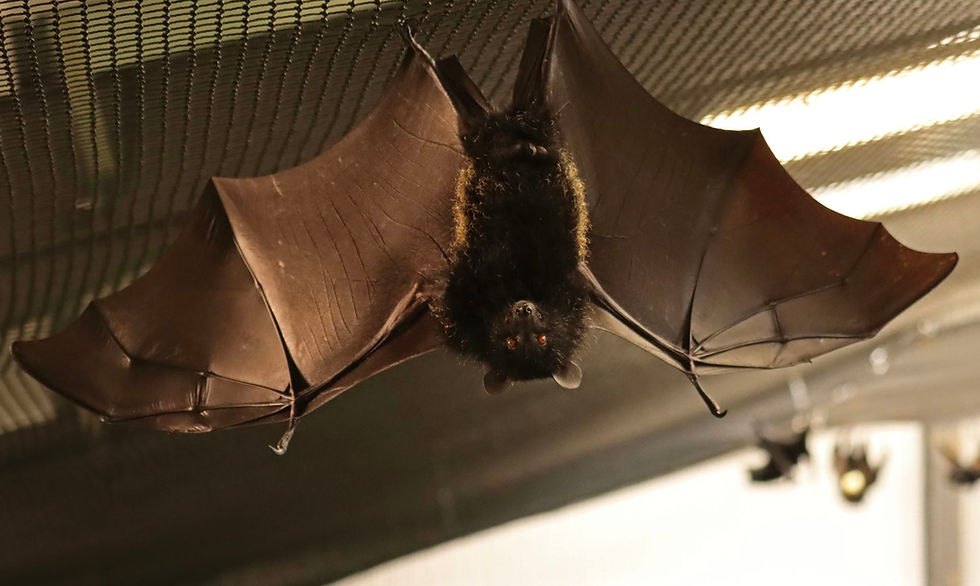Critically endangered bat born!
- maxine545
- Dec 31, 2023
- 3 min read
We are excited to announce a critically endangered pup birth as part of vital international breeding programme.
The pup was born on the 16th November to first-time mum, Sima, who is 5 years old. With only 1,200 of these bats left in the wild and just over 100 of these bats in captivity, this bat pup is vital to the future of the species and breeding programme.
The pup is doing well and the keepers are able to check it visually throughout the day. The sex of the pup is not known yet and will be determined on the first vet health check.

The bats give birth whilst roosting and the pup’s first mission is to crawl down (up) the mother’s body and find the teats which are located under her wing. The pup must be strong enough to hold onto Sima for several months before becoming independent.
We are proud to be home to the world’s second captive breeding population of Livingstone’s Fruit Bats, becoming the UK mainland’s only location where you can see these rare bats.
We have a purpose-built, sustainable facility where these flying mammals can be shown at their best with ample room to spread their wings and fly. These ‘flying foxes’, as they are affectionately called, have an impressive wingspan of up to 1.2 metres and they are the world’s third largest bat species.
The bats at the Zoo are part of a vital captive breeding programme, in association with Gerald Durrell’s Jersey Zoo, to increase their population in captivity and maintain a captive back-up group in case their wild counter-parts become extinct. Currently, there are only just over 100 of these bats in captivity in the world between Northumberland, Jersey and a zoo in France.
Unlike most bat exhibits within Zoos, the new ‘Fruit Bat Island’ exhibit is a day-time exhibit, allowing visitors to see the residents up close and in daylight. “My goal was to change visitor perceptions with regards to bats. These bats have adorable fox-like furry faces, with big Mickey Mouse ears and huge eyes - I want people to fall in love with them and gain a new favourite animal when they visit.” says Maxine.

Their wingspans can be up to 1.2 metres, the 3rd largest bat in the world.
Livingstone’s Fruit Bats originate from just two small islands that form part of the Republic of Comoros in the Indian Ocean, northwest of Madagascar. The most recent survey found approximately 1,200 wild bats in as few as 25 different roost sites across remote areas of the two islands. This species is at risk of imminent extinction, which means they are likely to become extinct in the near future. This is due to deforestation and the risk of severe tropical storms.
The Comoros is a developing nation with an exponentially increasing human population who use trees for building & industry, and land for growing food & earning survival income.
With increased global warming effects, the stronger cyclones and hurricanes that hit the Comoros Islands bring a high risk of destroying bat roosts, creating mudslides and whisking fragmented bat populations out to sea where they then become stranded.
Northumberland Zoo supports the vital conservation work carried out by Dahari NGO who are based in the Comoros, responsible for protecting natural habitats and educating the people who share the islands with this rare and elusive species.
Visitors to Northumberland Zoo can learn more about the bats through the interactive Northumberland Zoo app and watch more about the bat birth on the Zoo’s Youtube channel.
The Fruit Bat Island home was opened in December 2022 to the public and until now, visitors have not had the opportunity to actually go in with the bats.
Watch a video of the unveiling of the bat pup on our Youtube channel: Bat Pup Birth

